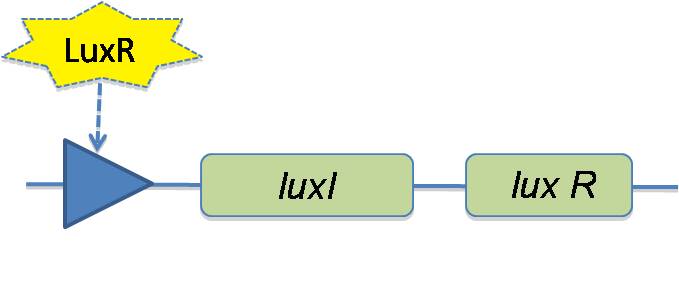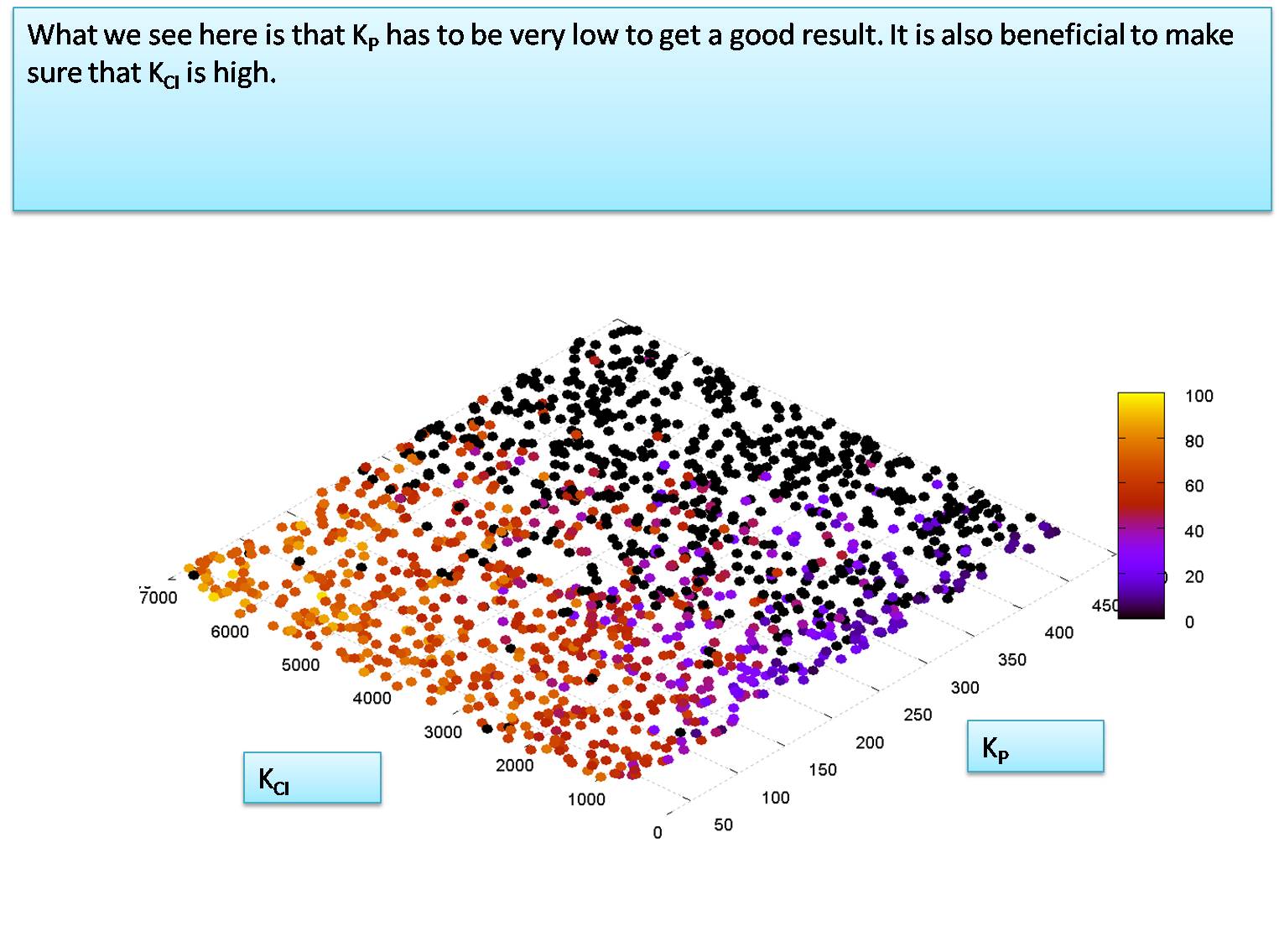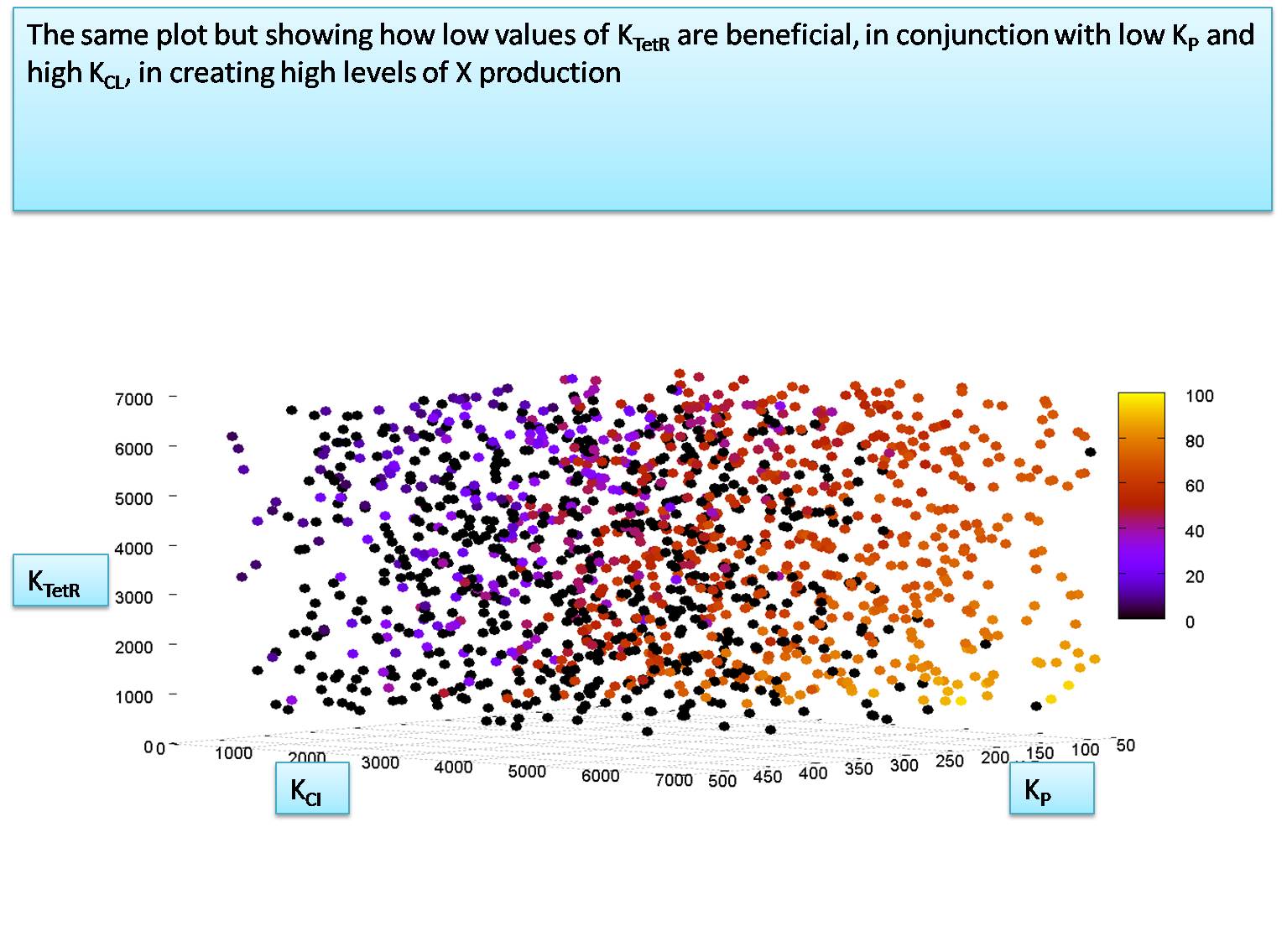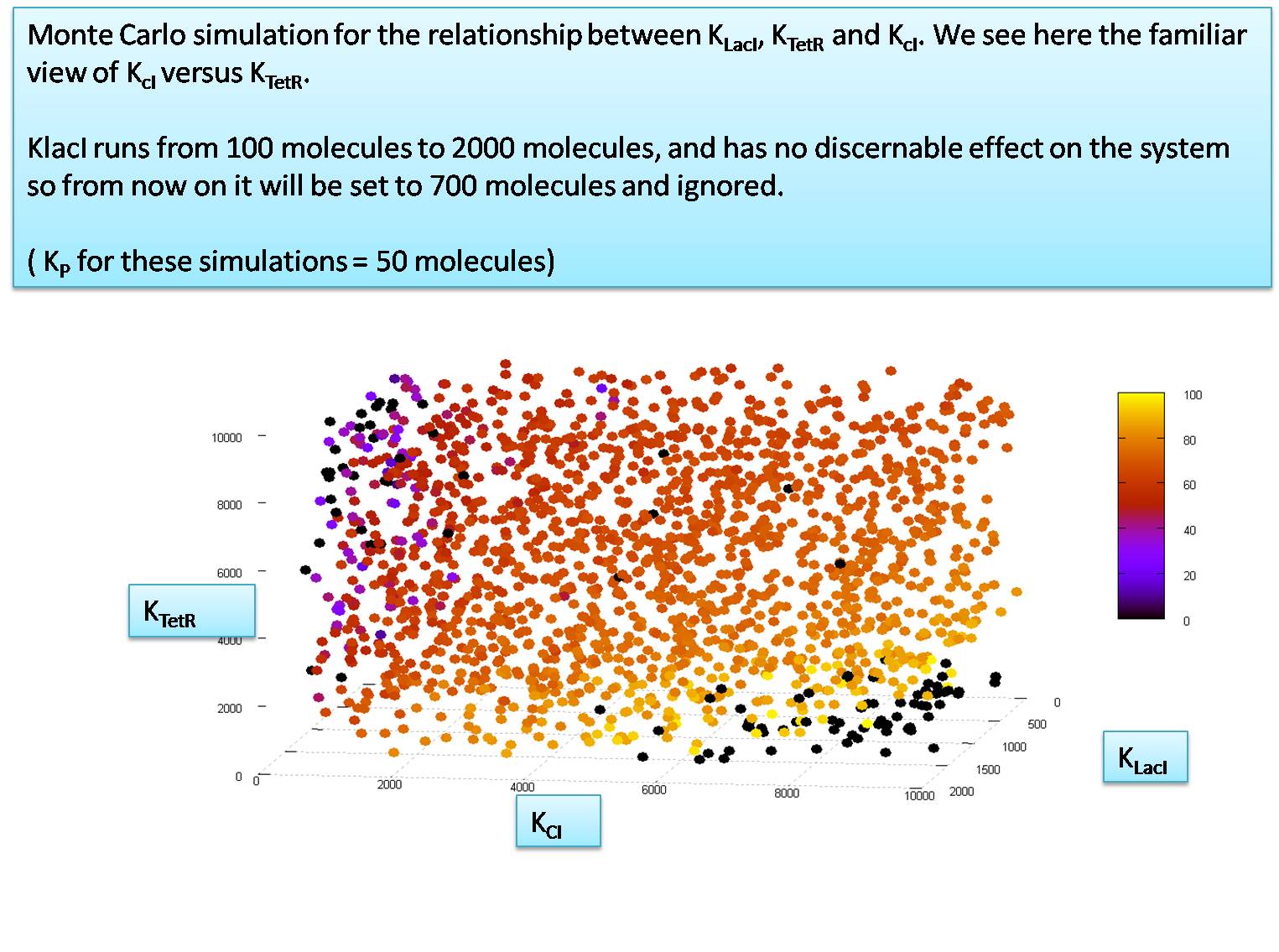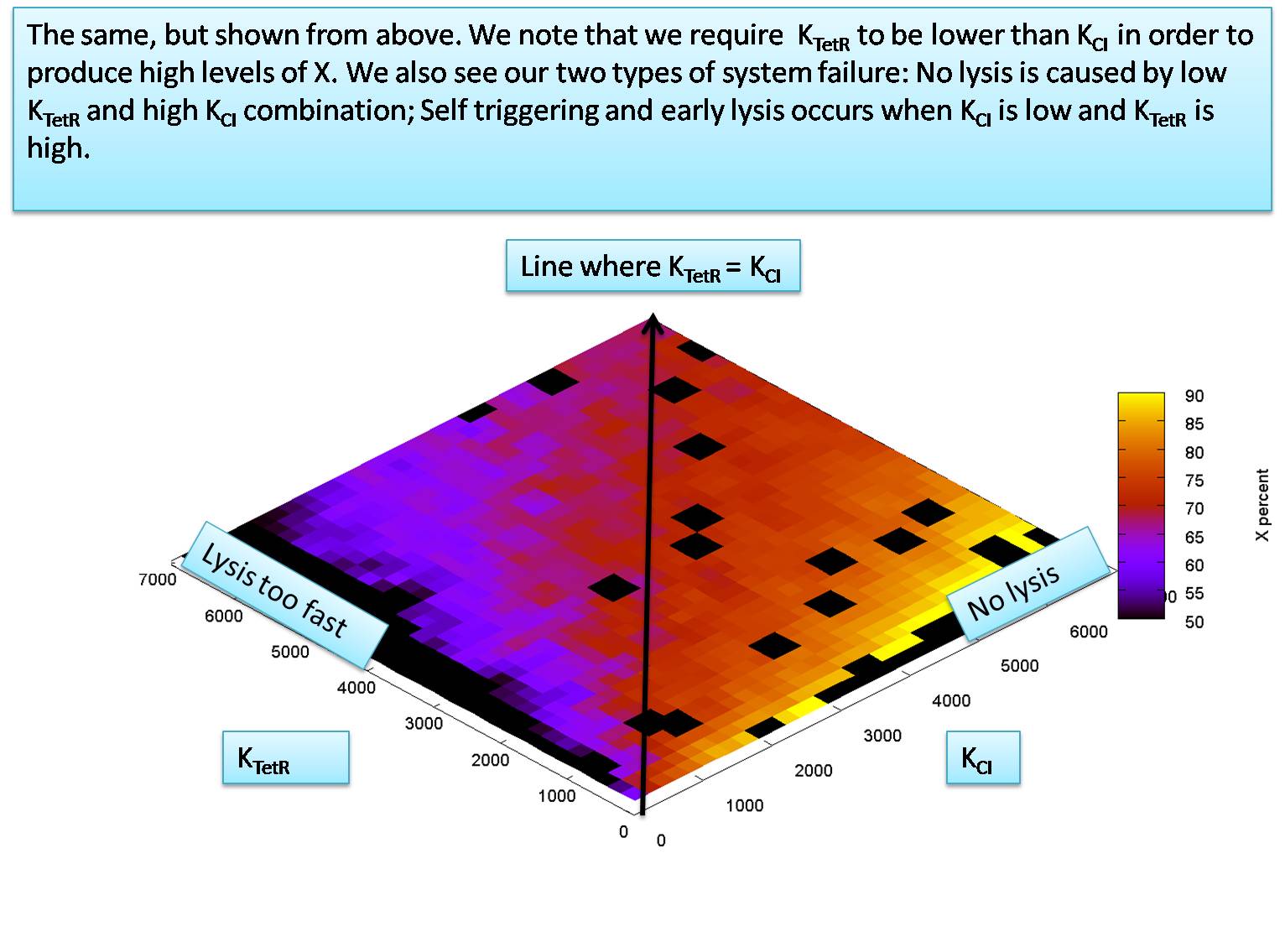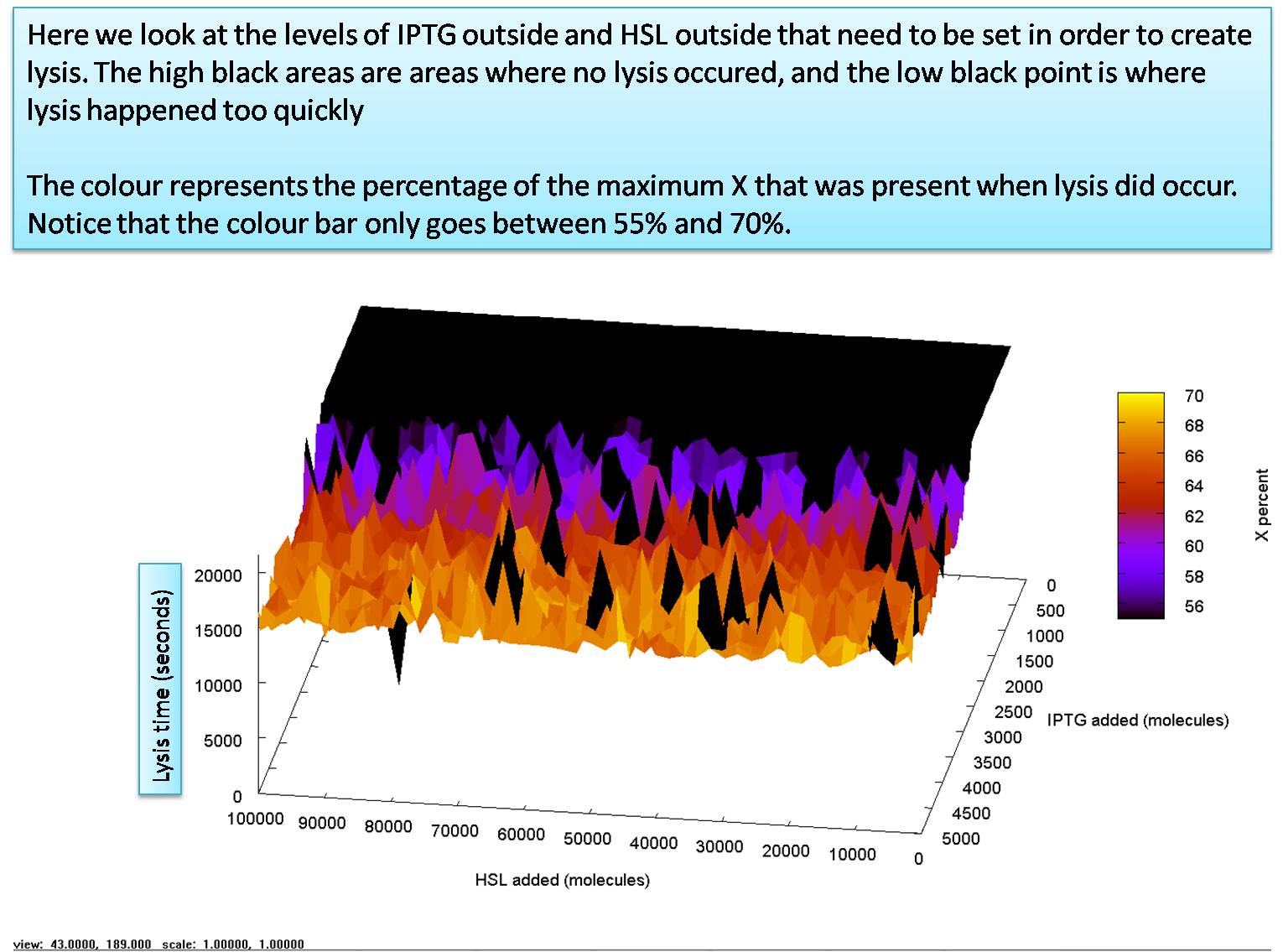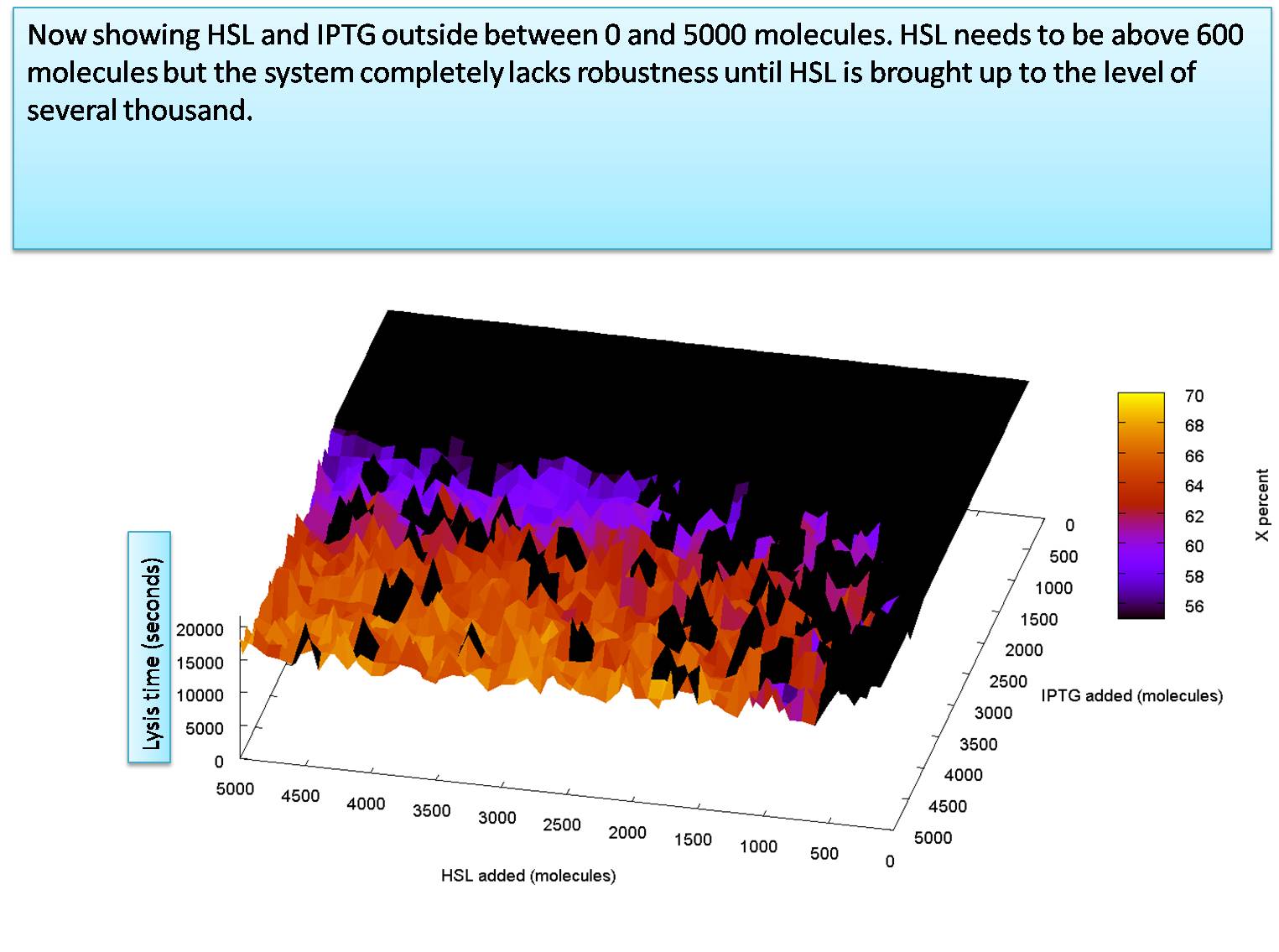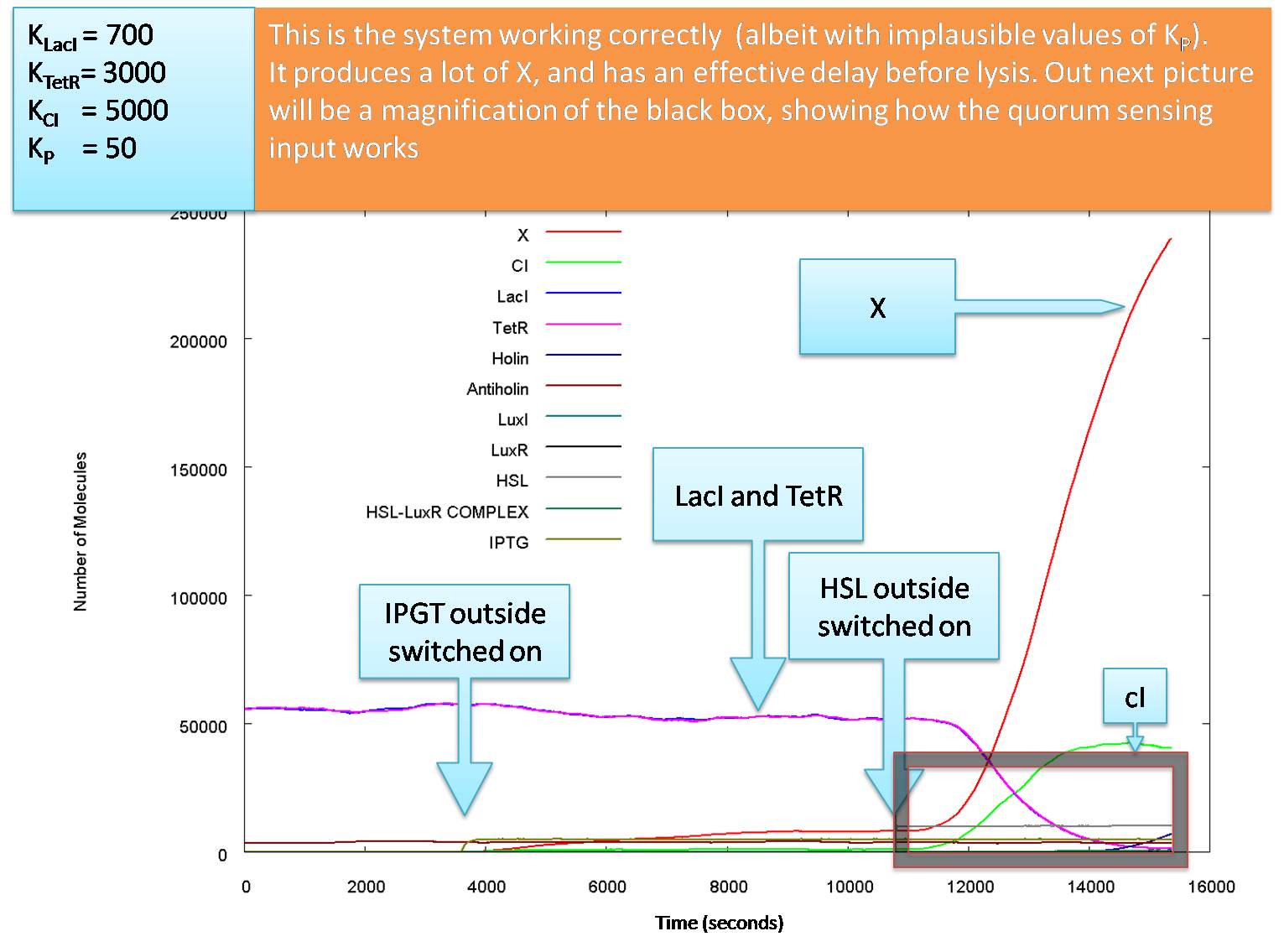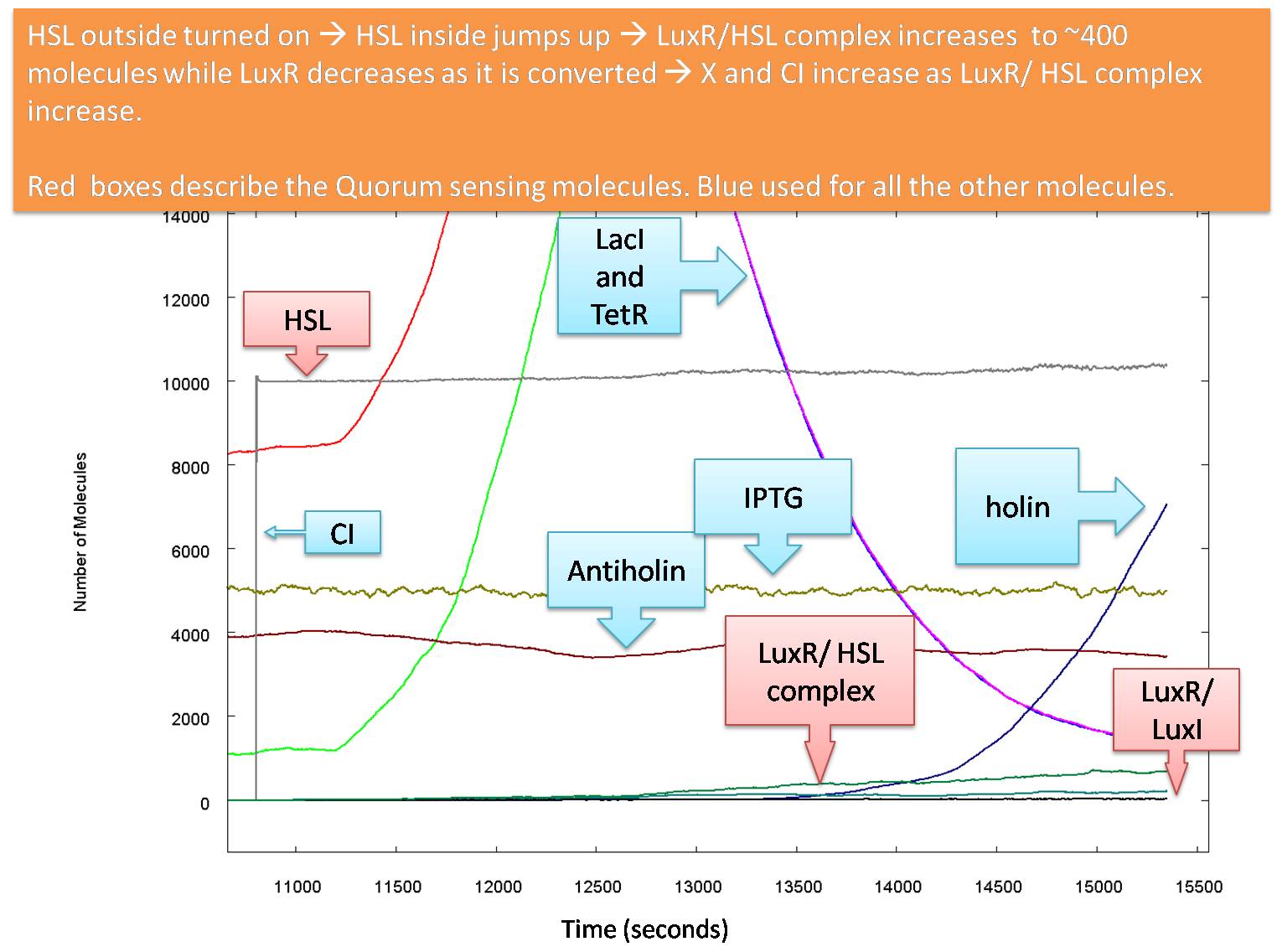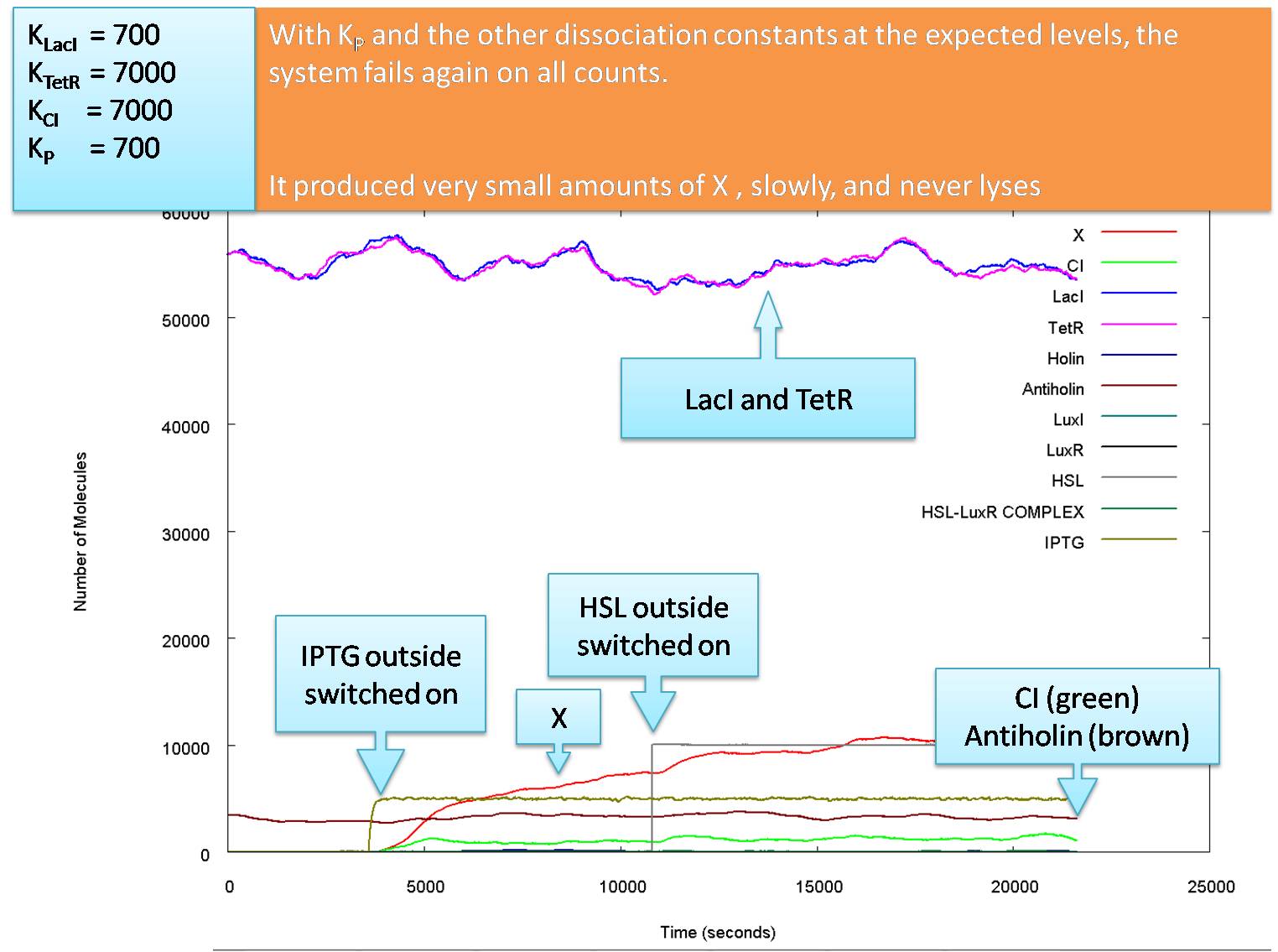Team:Aberdeen Scotland/parameters/invest 4
From 2009.igem.org
(→How the system is expected to function) |
m (→The Input-dependent model) |
||
| Line 21: | Line 21: | ||
taken from ***** | taken from ***** | ||
| - | Production max for QS feedback = 0.002 | + | Production max for QS feedback = 0.002 PoPS |
| - | Production min for QS feedback = 0.00015 | + | Production min for QS feedback = 0.00015 PoPS |
These values are taken from the paper “ FIOADAOIDFJAOFJASDIOJASOIJADOAJSDAFOJAFOAJSD” | These values are taken from the paper “ FIOADAOIDFJAOFJASDIOJASOIJADOAJSDAFOJAFOAJSD” | ||
Revision as of 11:48, 14 August 2009
University of Aberdeen - Pico Plumber
Contents |
The Input-dependent model
For this model, we no longer assume the trivial process of repression of LacI being lifted and Quorum Sensing (QS) being turned on. The LacI repression is now a repression / induction hill function with a Kd of 1200 molecules per cell for IPTG forming the LacI-IPTG complex. We assume IPTG leaks into the cell from outside. We only set the outside concentration of IPTG. For quorum sensing all simply set an elevated exterior HSL concentration which is free to diffuse in. We now include a feedback loop into the QS mechanism. To do this we attach a lux box onto the plasmid producing LuxR and LuxI, as follows:
However, the production strength of this lux box is smaller than that of the lux box for producing X, Y and cI. The strengths are as follows:
Production max for X, Y and cI = 0.44 PoPS (Polymerases-per-second)
taken from the iGEM page of ***** and personal communication with **** on ****
Production min for X Y and cI = 0.013 PoPS
taken from *****
Production max for QS feedback = 0.002 PoPS
Production min for QS feedback = 0.00015 PoPS
These values are taken from the paper “ FIOADAOIDFJAOFJASDIOJASOIJADOAJSDAFOJAFOAJSD”
An important new parameter is KP. This is the dissociation constant for “P” activating the lux boxes, where P is the LuxR-HSL complex. In the next section we show how the most important results obtained with this model.
Level of KP required for system to function
here we use a Monte Carlo simulation to determine the value of KP in molecules per cell that is required for the system to function (note that the IPTG and HSL input levels added are both 10000 molecules)
Relationship between KTetR and KCI when KP is 50 and KLacI is 700
We notice that KP must be around 50 molecules to let the system function. We will now explore the relationship between KTetR and KCI at the value of KP=50 molecules per cell. for this simulation we set the HSL and IPTG input levels to 50,000 molecules. In our next section we will try to calculate the minimum levels of HSL and IPTG required to activate the system correctly.
The graph shows a great deal of stochastic fluctuation, which shows this system is not very robust. Increasing KP above 50 greatly increases this problem, as does decreasing HSL outside below 50,000.
Our estimation for KTetR and KCI suggest that KTetR is less than KCI. We assume the worst case value for these two dissociation constants and set them equal to each other, at KTetR = KCI = 7000 molecules per cell.
Required input levels of IPTG and HSL
We start by going from 5,000 molecules to 100,000 molecules for HSL and from 10 molecules to 5,000 molecules for IPTG. we see that the sysem requires only around 2000 molecules of IPTG outside, although it benefits slighty when it is exposed to more. Note that the graphs color bar only extends from 55% of X production to 70% of X production. There appears to be no disernable effect in increasing the HSL outside, although when it is above 70,000 it seems to reduce the stochastic effects that stop the system lysing.
We now look at a graph showing HSL at values below 5000 molecules.
Desired Operation
Here are the following assumptions that need to make
KP has to be ~50 molecules per cell
KTetR has to be ~3000 molecules per cell
KCI has to be ~ 5000 molecules per cell
the input level of HSL has to be ~10,000 molecules
the input level of IPTG has to be ~5,000 molecules
 "
"
